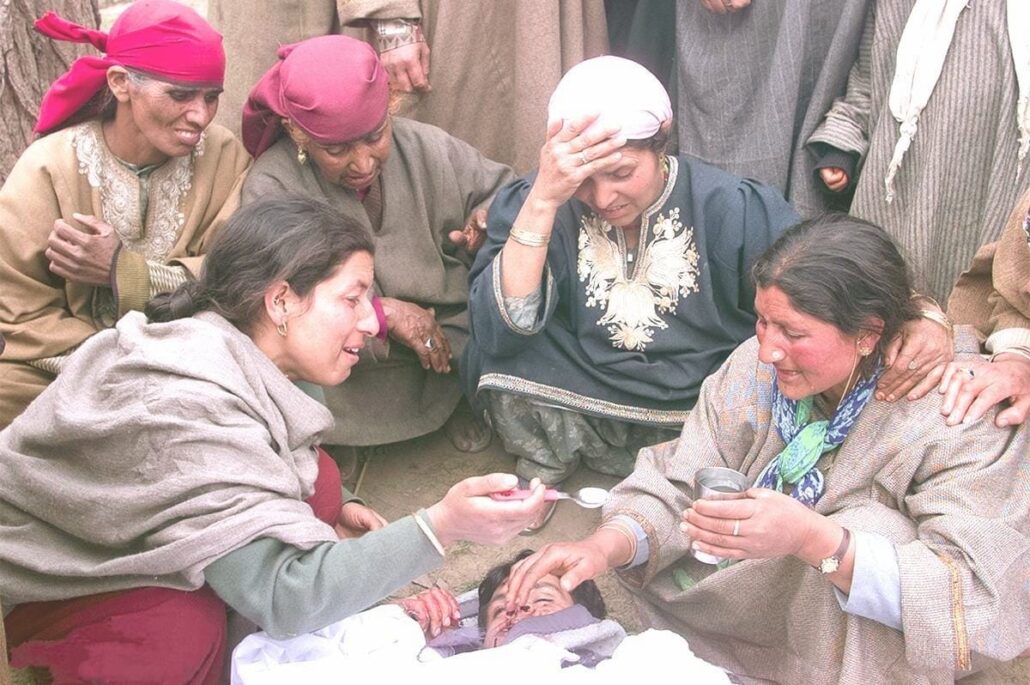
Nadimarg in South Kashmir’s Shopian district, was once known for bonhomie among Muslims and Kashmiri Pandits. Both communities would together celebrate festivals and weddings, and join in funerals – till one fateful night 13 years ago.
The bulk of the Pandits had moved out of the village in 1990, like those from other parts of the Kashmir Valley, as militancy reared its head in the state.
Only four extended families, comprising 52 people, stayed back in their traditional lands. But their love for their land was shattered on the night of March 23, 2003, when unidentified gunmen, crawling out of the shadows of the thickly forested mountainous region, stormed Nadimarg.
They rounded up 24 persons – 11 men and an equal number of women and two toddlers – from different houses and assembled them in the courtyard of a house. Then shots from the automatic weapons rang out.
Many died on the spot. Some, though grievously injured, tried to flee. But to no avail. One of the survivors that night, Mohan Bhat, escaped death by jumping out of a first-floor window, while these gunmen were rounding up others, But his father, mother, sister and uncle were not so lucky.
Local accounts say that the policemen guarding the village fled when the gunmen arrived. Bhat escaped to a nearby field, where he saw his dead father, with his head resting against a chinar tree. Bhat’s uncle lay in his father’s lap. His mother and sister were killed in the courtyard of the house, he would learn later. While hiding in the field, he saw the gunmen flee.
The death, blood and gore shook the entire country. After the massacre, Bhat moved to Jammu, where he works as a government school laboratory assistant.
He did not respond to several phone calls from IANS. He had told Pandita, the only journalist he spoke to, that he lost everything, “But life has to move on.” Pandita told IANS that Nadimarg was a “full-fledged massacre” which left for the rest of the Pandits no option but to leave then ancestral village for Jammu.
He said the inquiry ordered into the killings has not yet given its findings, as “there is a possible involvement of policemen deployed to protect the Pandit families.” Pandita said that Bhat went back to Nadimarg some seven years ago, but could not bring himself to enter his house.
“His trauma is yet to end.” He said police teams still visit him asking him to identify militants. Bhat, according to Pandita, is particularly angry with Mufti Mohammed Sayeed, the Chief Minister then and now.
Activist Sanjay Tikoo, who heard the news on the radio in Srinagar, some 65 km away, rushed to Nadimarg and applied in what Kashmiri is called “sinder” (vermillion) on the faces of the victims to hide their bullet marks, before helping with the last rites.
“I did that because they were brutally hit in their faces,” Tikoo, who heads a social group called Kashmir Sangarsh Samiti, told IANS.
Tikoo holds the state and central governments responsible for not coming clean on the massacre, asserting state actors were also responsible.
“Months before the massacre, we informed the police about a possible attack,” he said, alleging that the then Director General of Police A.K. Suri had retorted to him if police were there only to protect the Pandits. Tikoo never left the valley.
He has been trying to bring the Pandits back – with little success. Back in Nadimarg, the once bustling Pandit homes remain empty. The roofs and walls have collapsed as the elements have taken their toll. The belongings of the residents have long vanished.




